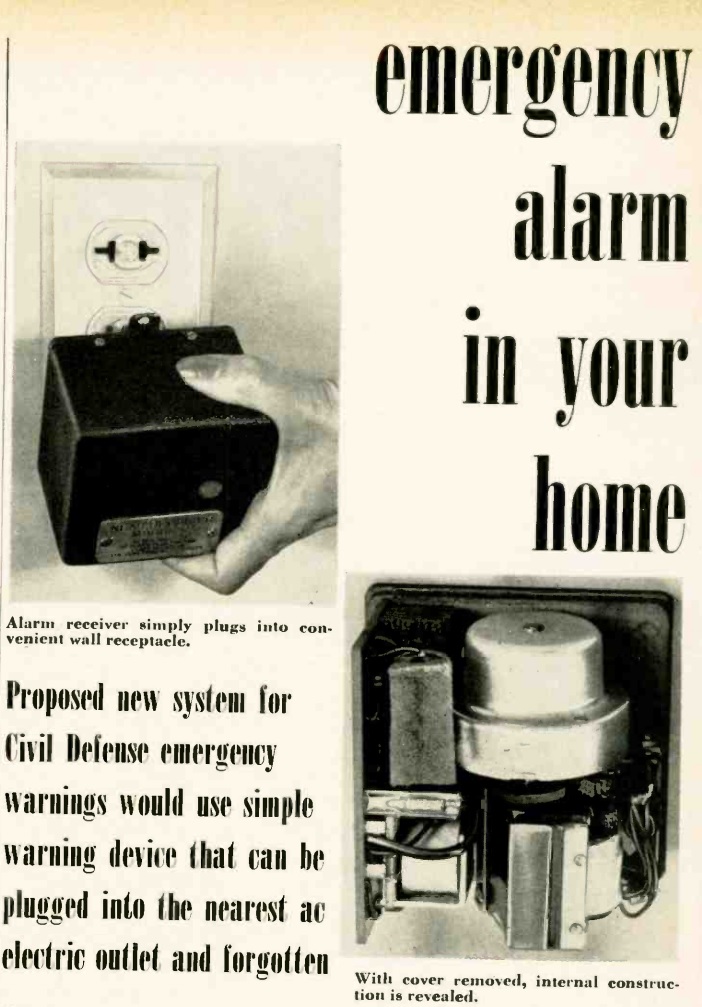 One of the great challenges of civil defense planners was alerting the public to an imminent nuclear attack. Sirens could be effective outdoors, but it was unlikely that people indoors would be able to hear them. One possible solution is discussed in the March 1961 issue of Radio-Electronics: NEAR, the National Emergency Alarm Repeater.
One of the great challenges of civil defense planners was alerting the public to an imminent nuclear attack. Sirens could be effective outdoors, but it was unlikely that people indoors would be able to hear them. One possible solution is discussed in the March 1961 issue of Radio-Electronics: NEAR, the National Emergency Alarm Repeater.
Three methods had been considered: telephone lines, power lines, and radio. The technical challenges for using the telephone network for simultaneously alerting the entire population were too difficult to overcome, and not everyone had a phone. Radio was a possibility, but radios were turned off many hours of the day, and especially at night. NEAR took advantage of the power grid. With only a few hundred repeater stations, a 240 Hz signal of about a volt could be superimposed on the line, and the receiver shown here was a clever electromechanical method of picking up that signal and sounding the alarm.
The home NEAR until shown here would be plugged in and forgotten by the homeowner until such time as there was an attack. It included a resonant circuit consisting of a 0.55 uF capacitor and 1 henry coil, with a tuned frequency of 240 Hz. To avoid false alarms, there was a time delay in the form of a 1 RPM motor. If the incoming signal were less than 10 seconds long, then the motor would simply reset and continue listening for a signal. But after 10 seconds, the motor would trip a clapper which used the outside of the device’s case as a sounder. The unit would emit a loud annoying noise which would alert the homeowner to the missiles that were incoming.

